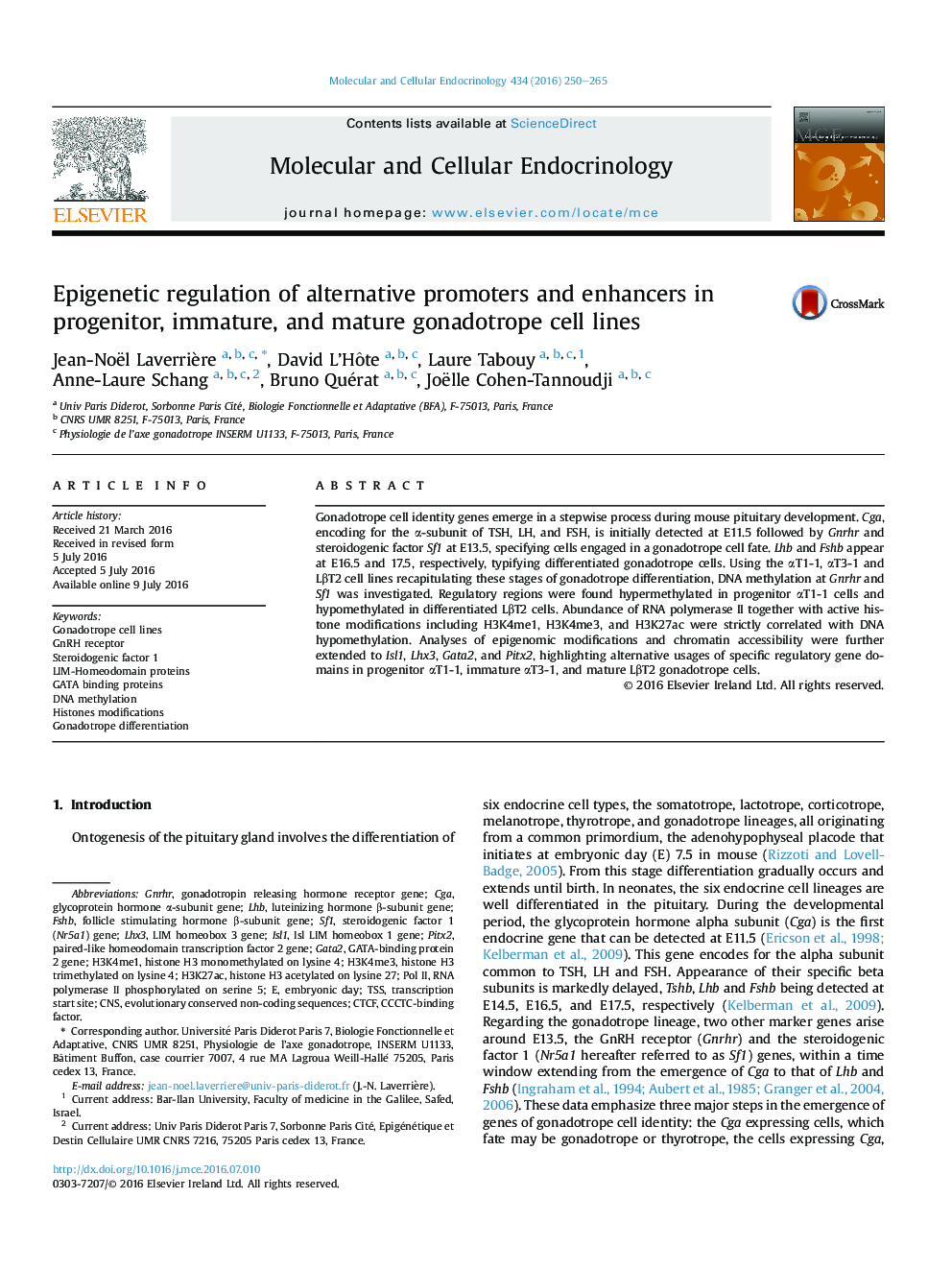| کد مقاله | کد نشریه | سال انتشار | مقاله انگلیسی | نسخه تمام متن |
|---|---|---|---|---|
| 2195513 | 1550845 | 2016 | 16 صفحه PDF | دانلود رایگان |
• DNA methylation correlates with Gnrhr and Sf1 silencing in gonadotrope progenitors.
• Epigenomic modifications in Gnrhr and Sf1 domains correlates with gene activity.
• Regulatory gene domains are implemented according to gonadotrope differentiation.
Gonadotrope cell identity genes emerge in a stepwise process during mouse pituitary development. Cga, encoding for the α-subunit of TSH, LH, and FSH, is initially detected at E11.5 followed by Gnrhr and steroidogenic factor Sf1 at E13.5, specifying cells engaged in a gonadotrope cell fate. Lhb and Fshb appear at E16.5 and 17.5, respectively, typifying differentiated gonadotrope cells. Using the αT1-1, αT3-1 and LβT2 cell lines recapitulating these stages of gonadotrope differentiation, DNA methylation at Gnrhr and Sf1 was investigated. Regulatory regions were found hypermethylated in progenitor αT1-1 cells and hypomethylated in differentiated LβT2 cells. Abundance of RNA polymerase II together with active histone modifications including H3K4me1, H3K4me3, and H3K27ac were strictly correlated with DNA hypomethylation. Analyses of epigenomic modifications and chromatin accessibility were further extended to Isl1, Lhx3, Gata2, and Pitx2, highlighting alternative usages of specific regulatory gene domains in progenitor αT1-1, immature αT3-1, and mature LβT2 gonadotrope cells.
Journal: Molecular and Cellular Endocrinology - Volume 434, 15 October 2016, Pages 250–265
